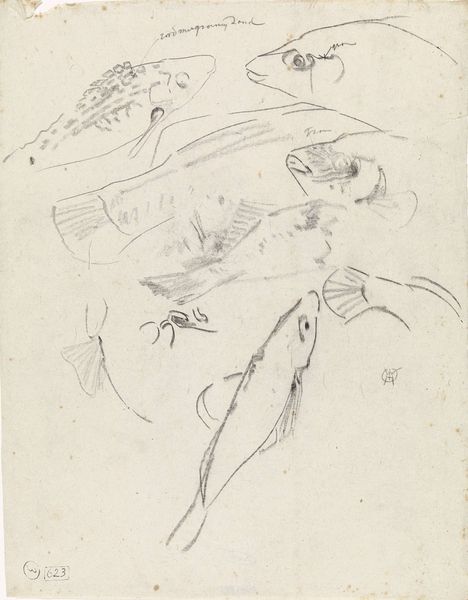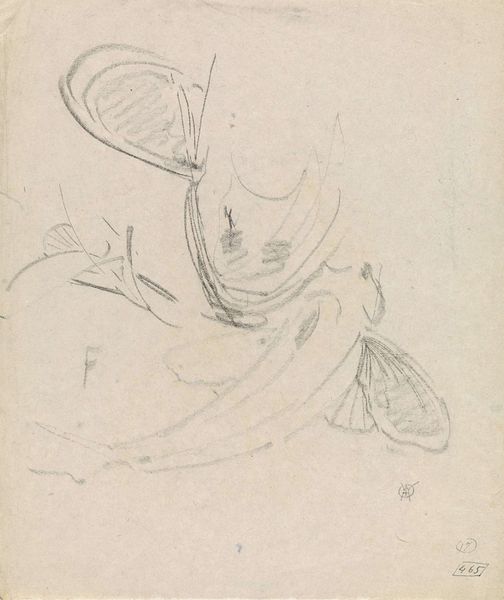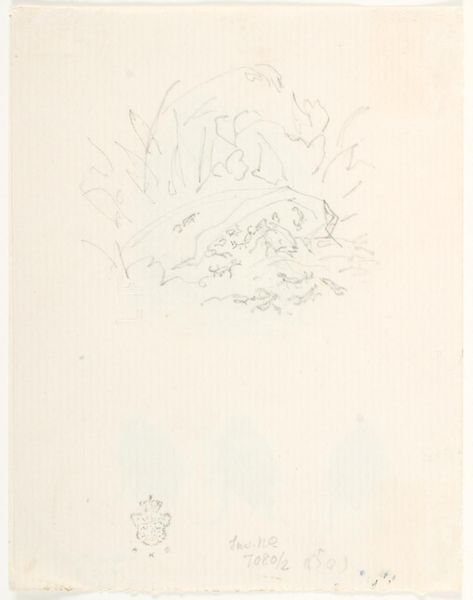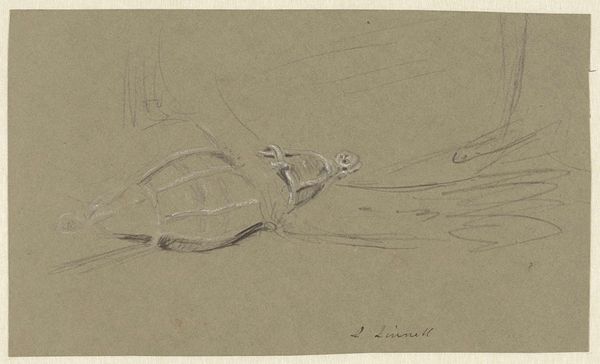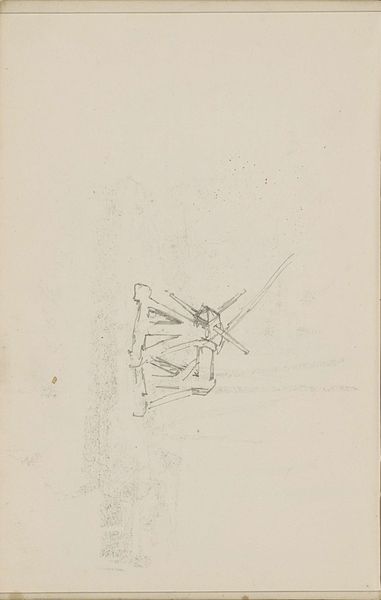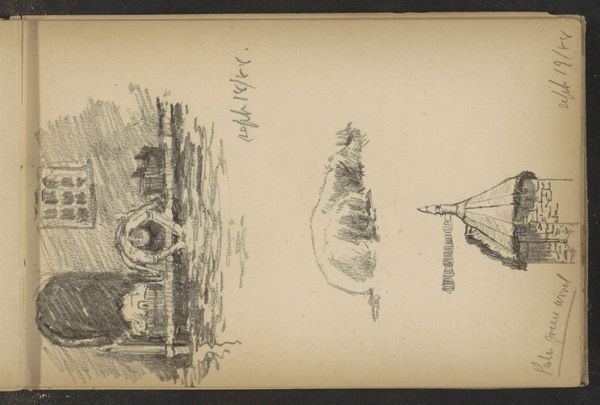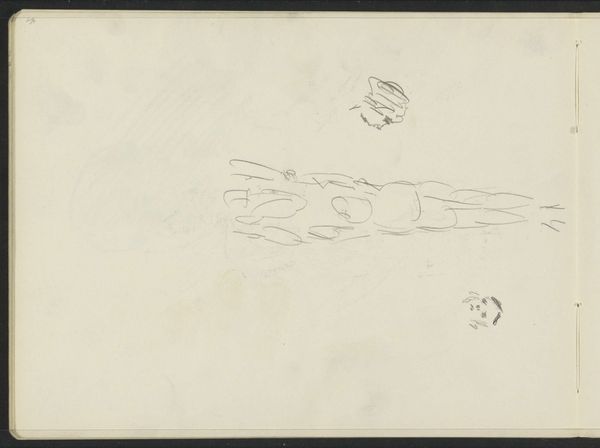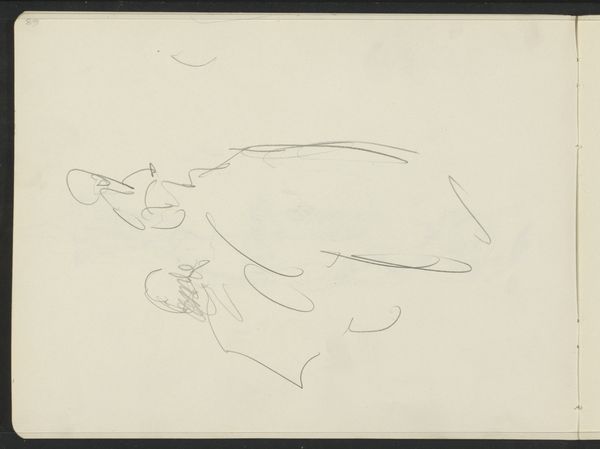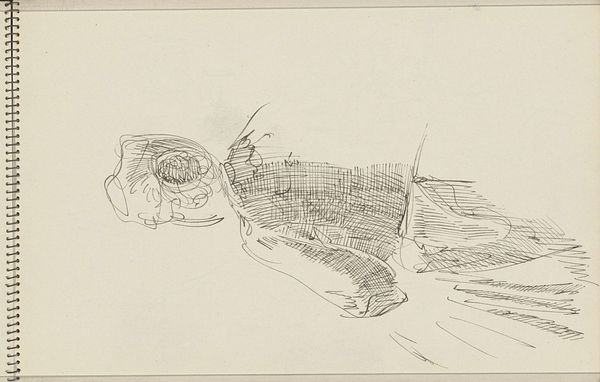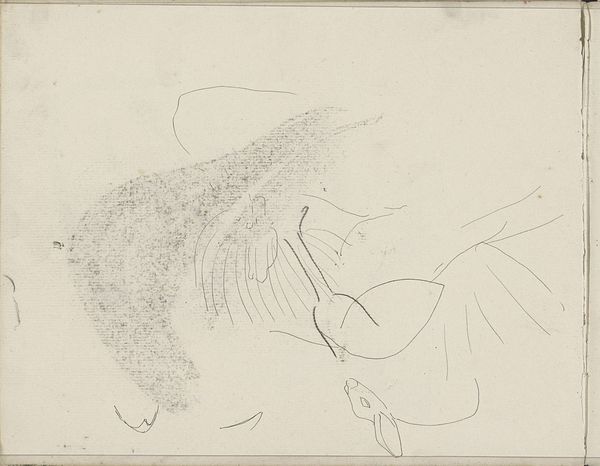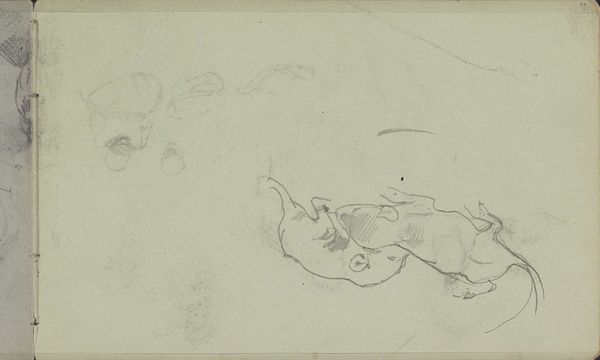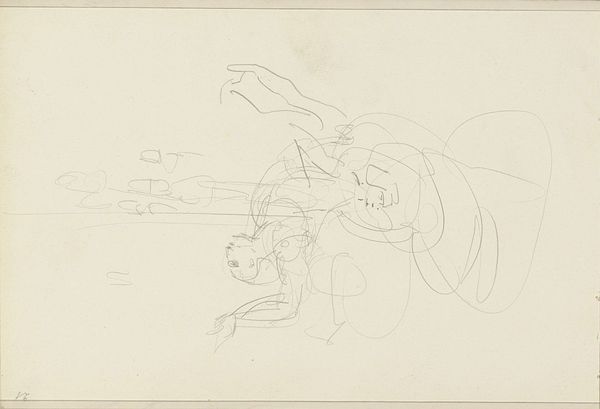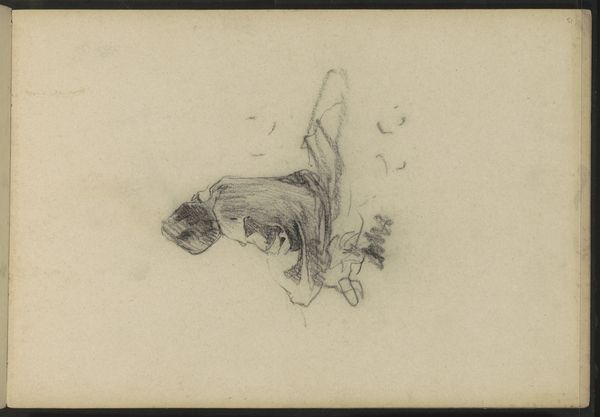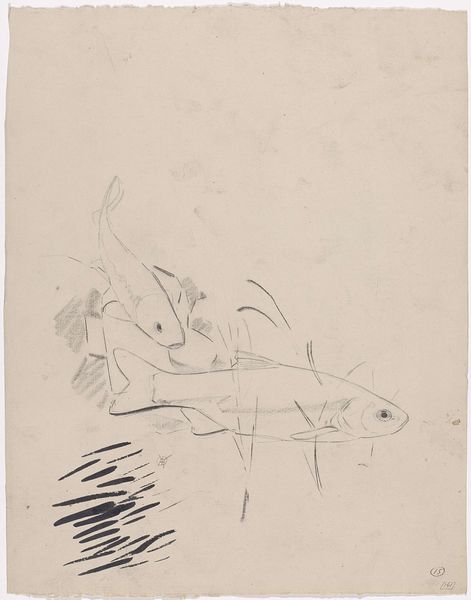
Copyright: National Gallery of Art: CC0 1.0
Curator: Look at this, Toulouse-Lautrec’s "Les Papillons," dating to 1895. It’s a lithograph, very delicate and ephemeral feeling. Editor: That it is. There's a dreamlike quality, isn’t there? The wispy lines, the muted tones… almost unfinished. What’s capturing my attention immediately is this contrast between the delicate butterflies and the stark presence of that steamboat. It feels symbolic, a kind of push and pull. Curator: Precisely. Lautrec's lithographic technique allows him to convey that fragility so well. I wonder about the commercial printers that assisted Lautrec in making the image. These were skilled craftspeople with printing shops scattered throughout the 18th Arrondissement. What was their labor arrangement? Did these printers gain access to his artistic network? What were the class relations in these creative spheres? Editor: The urban-industrial context shapes my response. Think about the cafes and dance halls of Montmartre during the Belle Époque. The prevalence of steamboats signaled industrial progress, but perhaps at a cost. Do the butterflies symbolize a fleeting beauty, a rejection of modernity? Perhaps they critique the march of industrialization across Parisian culture and landscape. Curator: Yes, it is interesting to consider how Lautrec may have situated this work to a larger public sphere in 1895, because there's a visual tension between the butterflies as objects of natural beauty with the more tangible technological form of a steamship. Also note how the texture becomes important, this sense of ink pressed into paper, a tactile experience that relates directly to the manual labor involved in its creation. It’s not just an image, but also an object. Editor: And its reception! Think about the galleries where Lautrec exhibited these prints, catering to a bourgeois clientele eager for a taste of bohemian life. Did they consider the social implications? Were they merely consumers of an aesthetic, or did the work spark a deeper reflection on their role in Parisian society? Curator: It seems, ultimately, it makes us think about how the simple act of making and consuming images is linked with both aesthetic decisions and social context. The texture and materials provide important historical details on labor, but it also reveals something about wealth. Editor: Absolutely. This print encourages me to question how art represents societal values and how even seemingly innocuous imagery reflects underlying power structures and public opinions. The contrast truly is at the heart of it all.
Comments
No comments
Be the first to comment and join the conversation on the ultimate creative platform.
